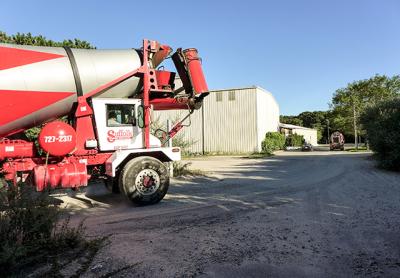Town Tackles Ugly Bottleneck in Wainscott

Commercial building projects in Wainscott could be halted for a year if the East Hampton Town Board moves forward on a plan for a development moratorium.
Responding to a request from the hamlet’s citizens advisory committee, the town board is fast-tracking a pause of site-plan reviews that would affect both sides of Montauk Highway.
During a board work session at the Montauk Fire House on Tuesday, East Hampton Town Supervisor Larry Cantwell cited development sprawl and dangerous traffic as among the concerns. The moratorium would be in place while a town-sponsored study is being prepared to make long-term recommendations for the Wainscott commercial district, he said.
Though preliminary review of projects in the moratorium area could proceed, the ban would prevent the planning board from issuing final rulings. It would effectively stop all new development and much of any possible redevelopment.
Among the projects that could be affected is a controversial proposal for a car wash on the former Star Room nightclub property.
John Jilnicki, a member of the town legal staff who has been working on the draft law, initially proposed limiting the moratorium to properties on the north side of the highway in the central business and commercial industrial zoning categories.
However, Mr. Cantwell and several other members of the town board pushed back, directing him to include south of the highway properties that would be subject to site plan review as well. These would include several residentially zoned parcels with nonconforming businesses on them that pre-dated the modern land use rules.
Mr. Jilnicki also suggested exempting from the ban proposals of up to 25 percent expansion of an existing business. The 25 percent figure, he said, was on the high end of averages seen in similar moratoriums elsewhere.
Mr. Cantwell suggested the exemption should be somewhat less generous, perhaps capping it at 10 percent. He also said that it might also include subdivisions among the projects held in abeyance while the Wainscott study is being written.
“Another question that comes out of this, is why we are not considering this for each hamlet?” Mr. Cantwell asked. The question went unanswered.
The Wainscott moratorium area would extend from West Gate Road, on the west side of the hamlet, to Wainscott Stone Road. Parcels with houses on them would not be affected. The building ban would extend several lots in from the highway in the central business and commercial industrial zones and include a sand mine and a masonry supply site, both of which had long been thought to be prime candidates for redevelopment.
The town board could vote as early as this evening to set a date for a hearing on the moratorium for next month, Mr. Cantwell said, perhaps as soon as Oct. 6.
Pressure for the moratorium from the Wainscott Citizens Advisory Committee, a group created by the town board to help keep an eye on the hamlet, was substantial. In a June letter to the town board the citizens committee said that the Wainscott business district had been allowed to develop in a haphazard manner.
The letter cited “industrial uses with cement trucks throwing up dust laden with chemicals and warehousing operations next door to retail clothing stores and restaurants.”
It went on, “Without a moratorium on significant planning decisions within Wainscott, the current town board is unintentionally permitting further degradation within Wainscott,” in contradiction of the 2005 East Hampton Town Comprehensive Plan.
Speaking at Tuesday’s town board meeting, Marguerite Wolffsohn, the town planning director, said, “People in Wainscott wanted to transform that from a highway strip to a walk-able community.”
Town Councilman Fred Overton remarked about congestion on Montauk Highway in Wainscott and how drivers looking to avoid frustrating delays were increasingly seeking alternate routes through residential areas. “How is this going to solve traffic problems? What is the big picture in the end?” he asked.
“A moratorium gives us a chance to develop the plan,” Ms. Wolffsohn said.
Additional hamlet studies are under way for Springs, North Main Street in East Hampton, Amagansett, and the Montauk downtown and dock areas.
If the Wainscott moratorium is put in place, property owners would be able to request an exemption from the town board during its duration, according to the draft.
A similar moratorium in Sag Harbor Village expired in the spring. It had been imposed to buy officials time to write new building rules to limit the trend toward super-sizing houses in the village.
“There is no point in having a hamlet study making positive recommendations and then have it go in the other way while the study is under way,” Simon Kinsella, a Wainscott resident and member of the citizens advisory committee, said in an interview on Tuesday.
“This is the gateway of East Hampton,” he said, “and the busiest section of road in East Hampton Town. . . . It’s an extraordinary situation.”
